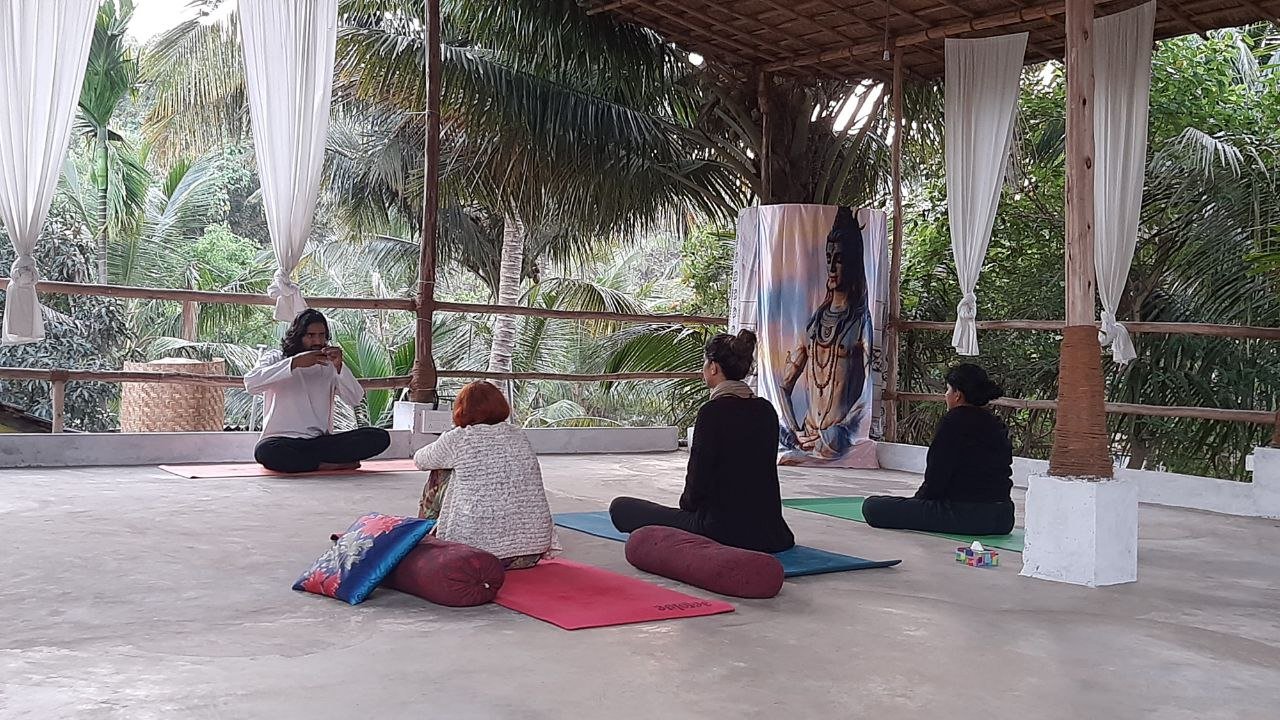Mantra yoga is a type of yoga that aims to help people find inner serenity. While mantras can be chanted almost anywhere, at any time, or for any duration of time, there are a few structured styles of chanting and established norms.
Kirtan is a devotional activity that involves singing mantras put to music in a call-and-response format. While each kirtan is different, the practice usually consists of a speaker who chants and a number of others who repeat the chanting.
Chanting mantras in a group is frequently utilized as part of a ceremony or in the opening or closure of a yoga practice.
Since each line is repeated on an exhale, chanting is also a form of Pranayama. It’s also a type of internal therapy in the sense that it’s a very healing procedure. As yogis, we believe that everyone is connected to the divine, and also that chanting is one method to connect to that divinity.
When we chant Om in yoga class, we are clearing the energies both inside and outside of ourselves, and we are summoning the divine as we begin our practice. A mantra is a phrase or a word sung aloud or quietly to elicit spiritual attributes.
The word’manas’ denotes mind, while the word ‘tra’ implies instrument or tool. It’s typically translated as “a mental instrument or tool” or “something which, when pondered, brings release.”
Mantras can be quite useful to your mental health. The mind and nerve system, not the brain, are the fundamental effects of chanting mantras.
The impact of mantras on our brain has been studied extensively by scientists. When we recite mantras, particular portions of the brain are stimulated, according to the researchers. Mantras provide a sense of calm. It is a good energy that clears our minds of negativity.
Intention, meaning, and vibration, or sacred sound, are the three aspects of yoga mantra. Intention is the cause, goal, and purpose of your practice. The concept and meaning of your particular mantra are what you practice in yoga class or meditation.
Your connection to the vibrating sound and life effectively at delivering that your practice cultivates is your sacred sound. Mantras can be stated openly, whispered quietly, or thought silently.
Vaikhari Japa is the practice of saying the mantra aloud in order to improve pronunciation, focus, and engage with the vibrations of the syllables.
Upamsu Japa is a practice of quietly whispering or chanting the mantra to promote serenity and harmony. Internal chanting, or chanting exclusively in the mind, is Manasika Japa, and it necessitates a high level of focus and attention. Chanting silently is thought to be significantly more efficient than chanting aloud.
MANTRAS ARE DIVIDED INTO THREE CATEGORIES
Mantras are divided into three categories: Bija (origin), Saguna (containing form), and Nirguna (beyond form) (without form). The Bija mantra can be utilised alone, but they’re more commonly mixed along with Saguna mantras to give them a specific “seed” power. The 7 chakras and the major Hindu deities are represented by the Bija mantras.
Individual deities or personalized facets of God are invoked by the Saguna mantras. The chanting of the Saguna mantra is thought to manifest the true form of the deity, hence manifesting its power.
The Nirguna mantras are the oldest of the three categories, as they are derived from Vedic scriptures. Because these phrases do not evoke any deities or individualized attributes of God, they are difficult to decipher and are thought to have no precise shape or meaning.
The essential principles in yogic philosophy are supposed to be contained in these mantras, which are said to be identified with all of creation. It is stated that to be able to focus on the abstract Nirguna chants, one’s mind should be very strong, hence they are not suggested for beginners.
Healing, relaxation, self-development, and prayer are just a few of the uses for mantras.
Benefits of Mantras & Chanting includes helping you reach a deep meditation practice, clears the mind of bad thoughts, and unites you to your inner consciousness and the divine by coupling the breath to the frequency of sound.
Chanting those sacred sounds has a relaxing effect on the mind and spirit, as well as the energy pathways in the body.
We may learn to tap the spiritual wisdom inside us, become more conscious in our daily lives, and help oneself heal and evolve by practicing mantras.


















